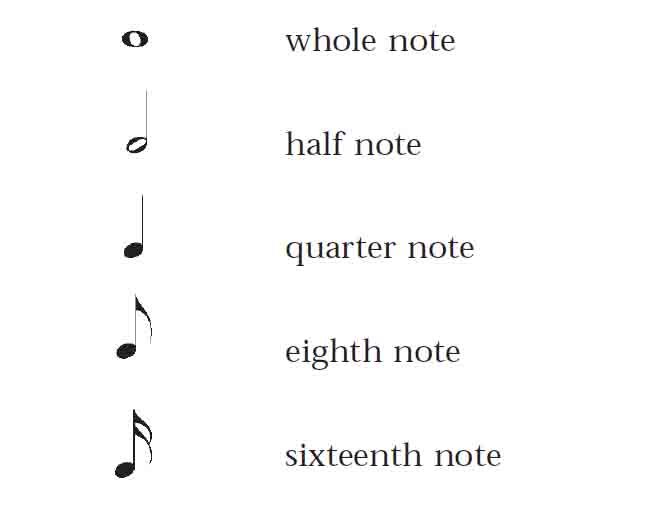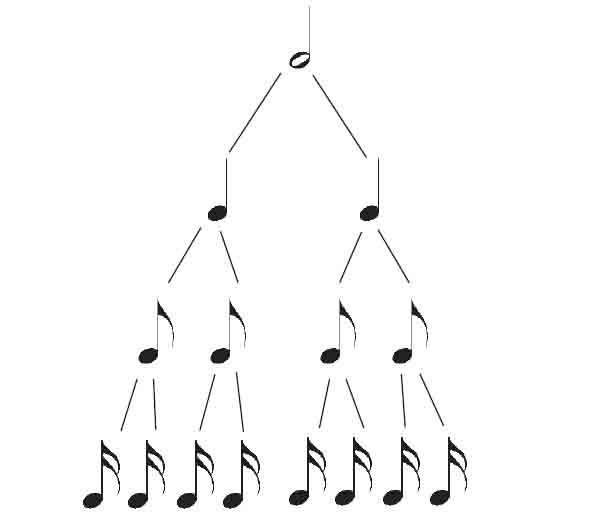A clear way to explain notes and rests
This article will explain notes and rests in music. If you haven’t read the article on the fundamentals of music theory, I strongly recommend that you read it first before continuing with this article.
This article discusses the concepts of notes and rests. Their functions and how they are used in music notation. So, let’s get right into these musical notes and rests.
Notes in Music
To explain notes and rests, we need to pick them apart. First let’s start with notes.
The notes you see on a staff have two main functions
- Pitch – how high or low the sound of a note is.
- Beat or Rhythm – how long or how short a note’s duration is.
Types of Notes
For someone who wants to learn how to read music notation, remembering the faces and names of these note symbols is very important.

Assuming that we are in a common time signature (I’ll explain in another article) the following holds true.
- Whole Note – 4 counts or beats
- Half Note – 2 counts or beats
- Quarter Note – 1 count or beat
- Eight note – 1/2 count or beat
- Sixteenth note – 1/4 count or beat
Starting from a whole note which has 4 counts or beats, it would take two (2) half notes to create one whole note.

It would take two (2) quarter notes to create one (1) half note, and 4 quarter notes to make two half notes.

If we make a diagram base on the number of beats listed above, the structure would look something like this.

If you analyze the structure, every group of notes is a subdivision of 2 from it’s previous note with a bigger value. Look at the image below to see what I mean.

Parts of A Note and Beams
A note consists of three main parts – the note head, the stem and the flag. A whole note is only made up of a note head.

To simplify our reading of note values or duration, we will use beams to connect the steams of a note.

Quiz on About Note Values
Musical Rest and Their Values
Music is not all about sound, it also involves silence or rest. The use of rest makes music more interesting. You wouldn’t want to hear a singer sing without stopping. The singer does need to take a break every now and then.
Let’s find more of this clear way to explain notes and rests.
Types of Rests
Notes have their equivalent rests. These are the different types of rest.

- Whole rest – 4 counts or beats
- Half rest – 2 counts or beats
- Quarter rest – 1 count or beat
- Eight rest – 1/2 count or beat
- Sixteenth rest – 1/4 count or beat
It takes two (2) half rests to equal the value of a whole rest.

It takes two (2) quarter rests to equal the value of a half rest. It also takes four (4) quarter rests to make 2 half rests.

Following the mathematical subdivision of rests, we are lead to this this diagram.

The diagram shows us that just like notes, rests are subdivided by two counts when we go lower into the picture. Unlike notes, rests don’t have stems and flags, so you can’t beam them together.
Dotted Notes and Rest
So far, we’ve covered the regular subdivisions of the value of notes and rests. There is another symbol that affects the value or duration of a note or a rest. It is the dot placed after a note or a rest.
A dot adds half of the value of a given note. Let us look at an example.

The image above is a dotted whole note. From our previous discussion, a whole note gives a value of 4 counts or beat. A dot adds have the value of the whole note. Half of 4 is 2.
Hence, the value of a dotted whole note is 6 counts.
Let’s look at another example.

The image above shows a dotted half note. There are 2 counts to a half note. Adding a dot to half note means adding half of the value of a half note which is a quarter note or 1. So, a dotted half note is equal to 3 counts or beats.
Dots can also be added to rests. Here is an example.

We can see from the image above that a dotted quarter rest is equal to a quarter rest plus an eight rest. One (1) beat plus 1/2 beat is 1 and a half.
A second dot can be added
Yes, you can add another dot after the first dot. It means that we add half of the value of the first dot.

Quiz About Rests
For teachers, this is a clear way to explain notes and rests, here’s an additional source of information about this topic. If you find this article helpful, don’t forget to give it a like and leave a comment.
What is the different instruments that used by the note and rest?